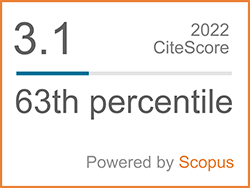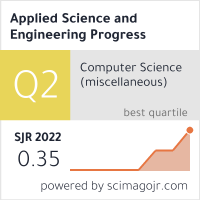Avoiding Covid-19 Using a 3D Digital Mock Up and Augmented Reality with Cobot in Digital Factory
Abstract
Keywords
[1] H. Yu, X. Sun, W. D. Solvang, and X. Zhao, “Reverse logistics network design for effective management of medical waste in epidemic outbreaks: Insights from the Coronavirus Disease 2019 (COVID-19) outbreak in Wuhan (China),” International Journal of Environmental Research and Public Health, vol. 17, no. 5, 2020, Art. no. 1770, doi: 10.3390/ijerph17051770.
[2] H. A. Rothan and S. N. Byrareddy, “The epidemiology and pathogenesis of coronavirus disease (COVID-19) outbreak,” Journal of Autoimmunity, vol. 109, 2020, Art. no. 102433, doi: 10.1016/j.jaut.2020.102433.
[3] S. Buranyi, “The WHO v coronavirus: Why it can't handle the pandemic,” 2020. [Online]. Available: https://www.theguardian.com/news/ audio/2020/may/01/the-who-v-coronavirus-whyit- cant-handle-the-pandemic-podcast
[4] A. Kengpol and C. Chanchittakarn, “The influence of vertical centrifugal casting on nickel aluminum bronze alloy for using in the Royal Thai Navy,” Applied Science and Engineering Progress, vol. 14, no. 3, pp. 503–510, 2021, doi: 10.14416/j. asep.2020.04.005.
[5] A. Kengpol and S. Tuammee, “The development of a decision support framework for a quantitative risk assessment in multimodal green logistics: An empirical study,” International Journal of Production Research, vol. 54, pp. 1020–1038, 2016, doi: 10.1080/00207543.2 015.1041570.
[6] A. Caggiano and R. TetiAn, “Digital factory technologies for robotic automation and enhanced manufacturing cell design,” Cogent Engineering, vol. 5, no. 1, 2018, Art. no. 1426676, doi: 10.1080/ 23311916.2018.1426676.
[7] M. Gregor and S. Medvecky, “Digital factory – theory and practice,” in Engineering the Future, Croatia: InTech, 2010, pp. 355–376.
[8] R. Geissbauer, S. Schrauf, P. Berttram, and F. Cheraghi, “Digital factories 2020: Shaping the future of manufacturing,” 2017. [Online]. Available: https://www.pwc.de/de/digitaletransformation/ digital-factories-2020-shapingthe- future-of-manufacturing.pdf
[9] G. Guizzia, D. Falconeb, and F. D. Feliceb, “An integrated and parametric simulation model to improve production and maintenance processes: Towards a digital factory performance,” Computers & Industrial Engineering, vol. 137, no. 2, 2019, Art. no. 106052, doi: 10.1016/j.cie.2019.106052.
[10] V. Naranje, P. V. Reddy, and B. K. Sharma, “Optimization of factory layout design using simulation tool,” in 2019 IEEE 6th International Conference on Industrial Engineering and Applications (ICIEA), 2019, doi: 10.1109/ IEA.2019.8715162.
[11] S. C. Sekaran, H. J. Yap, S. N. Musa, K. E. Liew, C. H. Tan, and A. Aman, “The implementation of virtual reality in digital factory,” The International Journal of Advanced Manufacturing Technology, vol. 115, pp. 1349–1366, 2021.
[12] A. Duangsuphasin, P. Rungsaksangmanee, A. Kengpol, and K. Elfvengren, “The development of deep learning methods to select passion fruit for the ageing society,” in 2021 Research, Invention, and Innovation Congress: Innovation Electricals and Electronics (RI2C), 2021, doi: 10.1109/ RI2C51727.2021.9559796.
DOI: 10.14416/j.asep.2021.11.011
Refbacks
- There are currently no refbacks.






.png)



